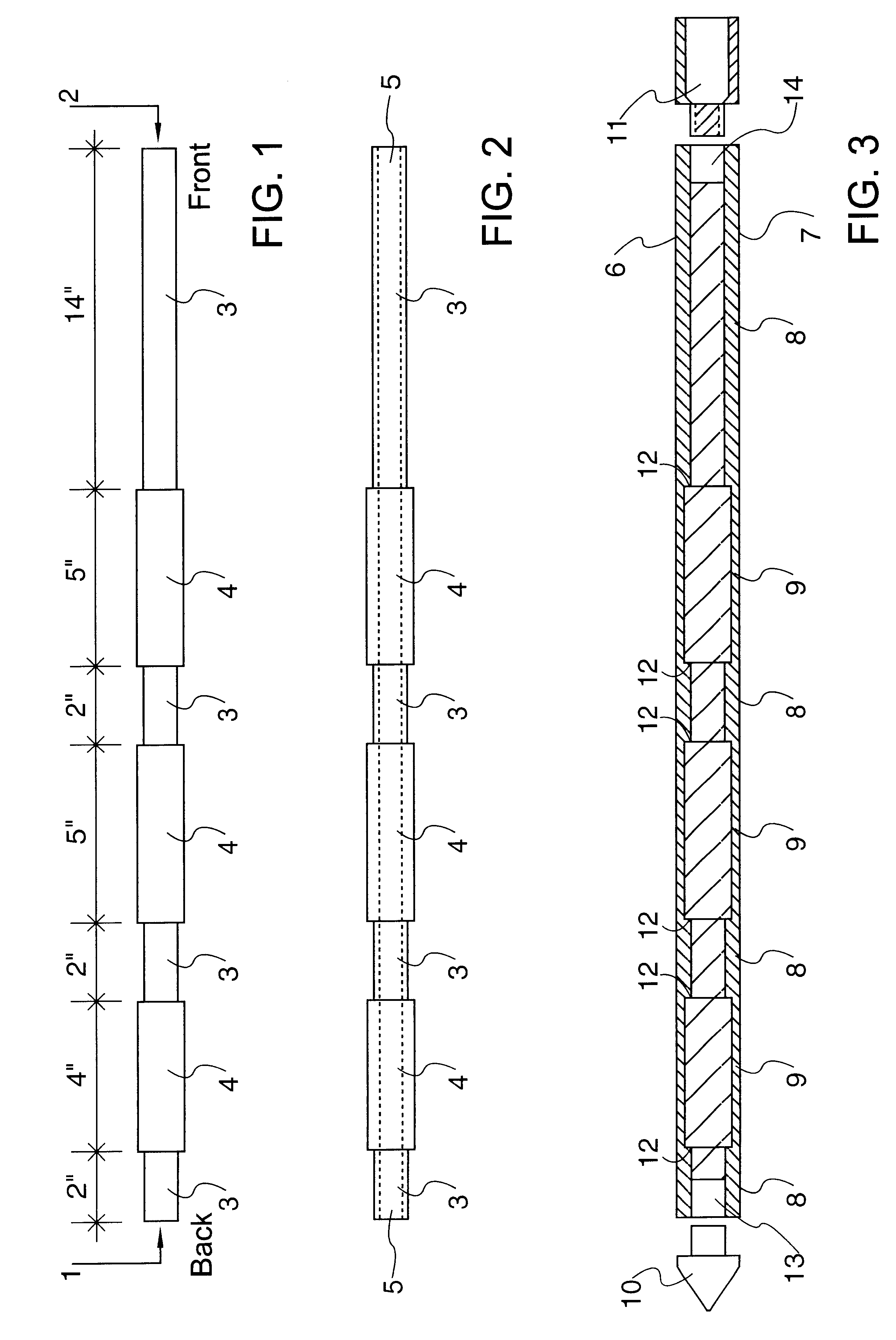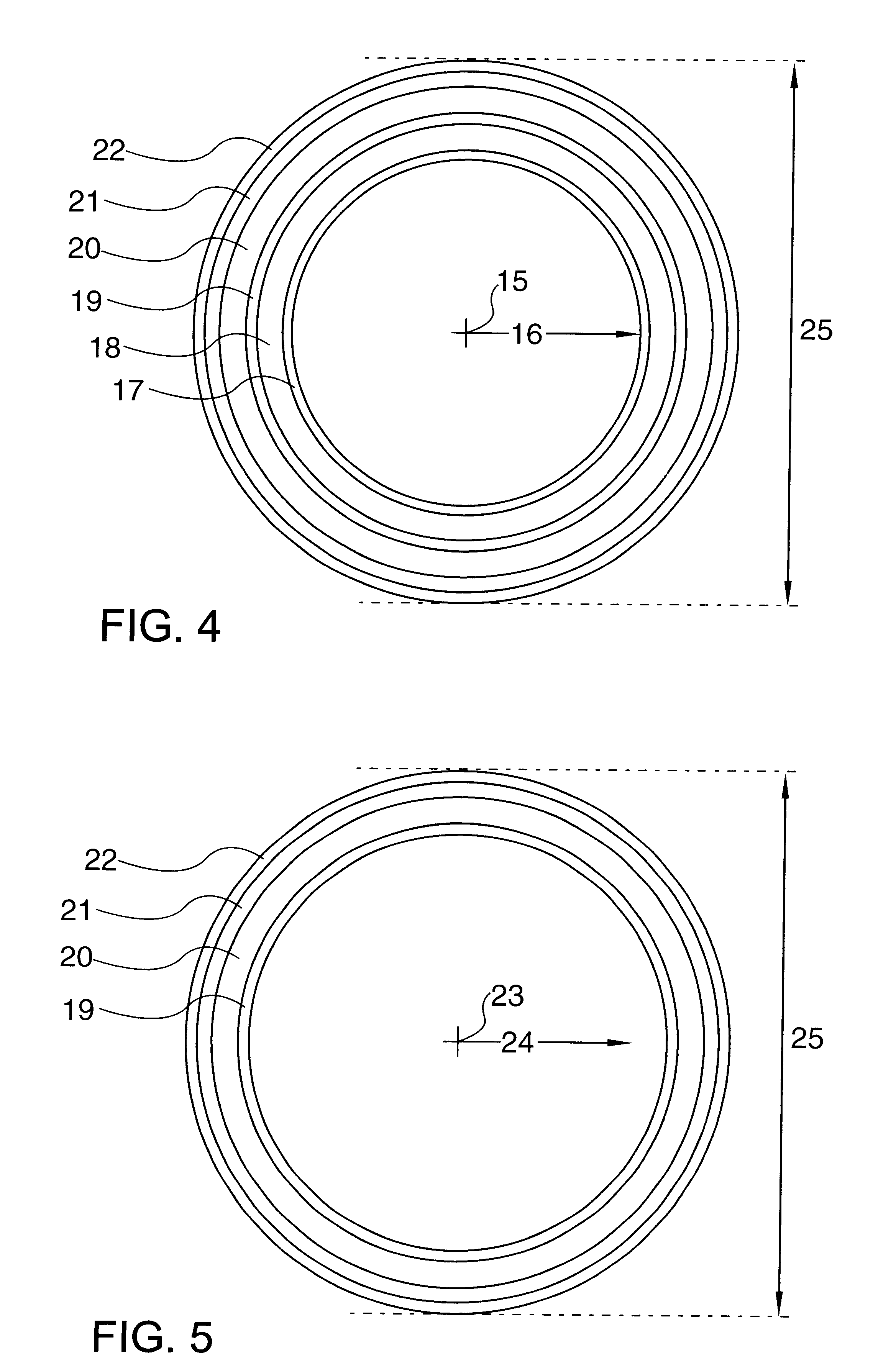Weight-forward composite arrow shaft
a composite arrow shaft and weight-forward technology, applied in the field of weight-forward composite arrow shafts, can solve the problems of high levels of draw force reduction at full draw, variances of this magnitude cannot be optimally accommodated, and are too limber for heavier draw-weight bows equipped with heavy mass limbs, etc., to achieve significant stiffening, enhance the penetration potential of arrows, and increase the strength of reinforcements
- Summary
- Abstract
- Description
- Claims
- Application Information
AI Technical Summary
Benefits of technology
Problems solved by technology
Method used
Image
Examples
Embodiment Construction
The preferred embodiment relates to an arrow shaft of a given size being constructed for use with hunting points, and which will, when incorporated into the construction of a finished arrow, effectively allow the utilization of a single set of fixed-weight, end-mounted components suitable for outfitting hunting arrows, for arrows of the given size of all lengths between 24" and 34". The preferred embodiment defines an arrow shaft that, when used to construct a finished hunting arrow, will yield a balance point that is within ten to fifteen percent in front of center when assembled with a single fixed-weight set of end-mounted components, when the given size arrow shaft is cut to any finished length between 24" and 34". The arrow shafts described in the preferred embodiment include features which, with minor modifications that would be obvious to one skilled in the art, would yield arrows suitable for other types of archery shooting as well.
FIG. 1 shows a side view of a solid, substa...
PUM
 Login to View More
Login to View More Abstract
Description
Claims
Application Information
 Login to View More
Login to View More - R&D
- Intellectual Property
- Life Sciences
- Materials
- Tech Scout
- Unparalleled Data Quality
- Higher Quality Content
- 60% Fewer Hallucinations
Browse by: Latest US Patents, China's latest patents, Technical Efficacy Thesaurus, Application Domain, Technology Topic, Popular Technical Reports.
© 2025 PatSnap. All rights reserved.Legal|Privacy policy|Modern Slavery Act Transparency Statement|Sitemap|About US| Contact US: help@patsnap.com



